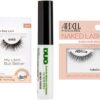
Ronda Rich
Syndicated Columnist
It happened 15 years ago yet the memory sticks to me like cotton candy to a child’s hand.
I still puzzle over it. Paducah, Kentucky, was a stop on a Mississippi riverboat cruise for which I had been hired as a storyteller. When the boat docked, I strolled down the picturesque streets. I bought a skirt that I cherished for years and visited the quilt museum.
There were several antique shops, all waiting for riverboat customers. I sauntered into one. On a counter, in the center of a store with red brick walls and ancient wood floors, I picked up an 8×10 picture frame. It held a photo of a gorgeous, young woman.
Her light brown hair was teased to perfection, her cheeks were rosy, and she wore a dark blue velvet drape which wrapped her shoulders exposing a swan-like neck and a dewy décolleté.
I studied it, carefully. How would a photo like this wind up for sale? “It must be a commercial photo that came with the frame,” I thought. Needing to convince myself of that, I slid off the back and took out the photo.
It was heavy stock paper. The photo had been touched with color — the way portraits were dolledup in the 1950s and 60s. On the back was stamped the name of the photography studio.
It was genuine. This was a young woman, around 20, who had dressed up, prettied her hair, put on her makeup, and gone to sit for a photographer.
How was it that someone, somewhere, did not treasure it and say, “This was my aunt. Wasn’t she beautiful?”
The owner of the store was doing paperwork at the register, so I took the framed photo over to her.
“Ma’am, I’m puzzled over how a family photo like this could end up in an antique store. Do you remember where you got it?”
She pushed a wisp of gray hair back from her forehead and thought for a second. She nodded. “I bought a box of items that were left over from an estate sale. After the good stuff goes, they box up the knickknacks and sell them for a flat price. I never know what’s in the box until I’ve bought it.”
I shook my head sadly. From time to time, I think of that lovely woman’s picture in Paducah, Kentucky, and question the path it took.
It happened again, recently, when I bought a “slightly used” Bible. One of my more favorite people is Charley Humbard, the president and co-founder of the family channel, UP. His father was the well-respected evangelist Rex Humbard. In the ironic turns of life, I used to, as a child, watch Reverend Humbard preach every Sunday at 7:30 a.m., followed by Gospel Jubilee at 8 a.m. hosted by The Florida Boys.
Charley, who was around my age, played guitar in the family band. They sang one song before preaching began. The Gospel Jubilee hosted popular Southern gospel singers, including a bashful young girl, Karen Peck, who sang with the LeFevres. Karen has been my best friend for 35 years and Charley had been a good friend for a long time.
Rev. Humbard was Elvis’ favorite preacher and preached Elvis’ funeral. Charley always laughs about my fascination with that.
In a conversation, Charley mentioned a King James Bible where his father had footnoted prophecy scriptures and explained them. I hung up the phone and went in search of the Rex Humbard Prophecy Bible, long out of print. But eventually, I found one and promptly ordered it.
When it arrived, I was stunned to discover a woman’s name engraved on it. I studied on it for a long time.
How does a personalized Bible find its way to a used book store and travel into a stranger’s hands? Or a family photo to an antique shop?
I have no answers. Ronda Rich is the best-selling author of “What Southern Women Know About Faith.” Visit www. rondarich.com to sign up for her free weekly newsletter.
This post was originally published on this site be sure to check out more of their content.








